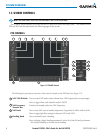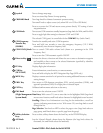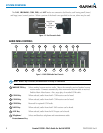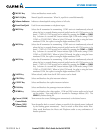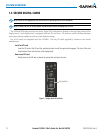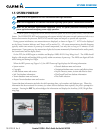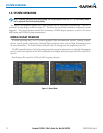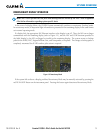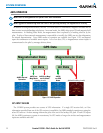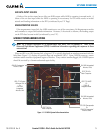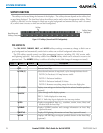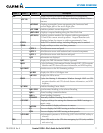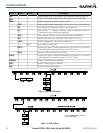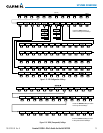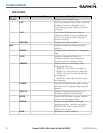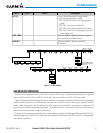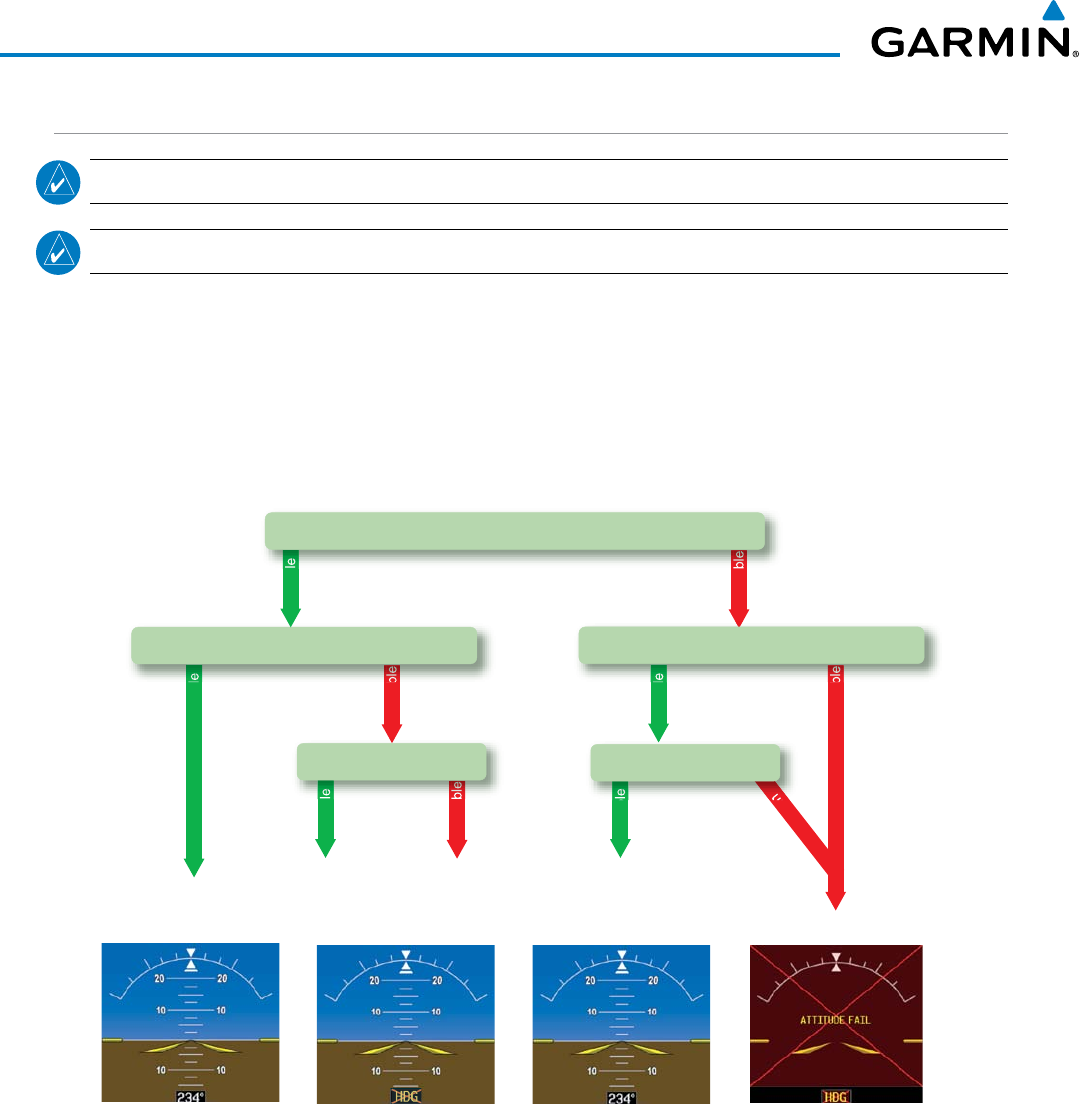
190-01255-00 Rev. B
Garmin G1000H
™
Pilot’s Guide for the Bell 407GX
14
SYSTEM OVERVIEW
AHRS OPERATION
NOTE: Refer to the Appendices for specific AHRS alert information.
NOTE: Aggressive maneuvering while the AHRS is not operating normally can degrade AHRS accuracy.
In addition to using internal sensors, the GRS 77H AHRS uses GPS information, magnetic field data and air
data to assist in attitude/heading calculations. In normal mode, the AHRS relies upon GPS and magnetic field
measurements. In Heading Preset Mode, the magnetometer data is replaced by a heading value set by the
pilot. If either of these external measurements is unavailable or invalid, the AHRS uses air data information
for attitude determination. Four AHRS modes of operation are available (see Figure 1-10) and depend
upon the combination of available sensor inputs. Loss of air data, GPS, or magnetometer sensor inputs is
communicated to the pilot by message advisory alerts.
Attitude/Heading Invalid
AHRS
no-GPS
Mode
AHRS Normal
Operation
AHRS no-
Mag Mode
AHRS no-Mag/
no-Air Mode
Heading Invalid
available
available
unavailable
unavailable
available
unavailable
unavailable
available
Air Data
Magnetometer Data
unavailable
available
GPS Data
Magnetometer Data
Air Data
Figure 1-10 AHRS Operation
GPS INPUT FAILURE
The G1000H system provides two sources of GPS information. If a single GPS receiver fails, or if the
information provided from one of the GPS receivers is unreliable, the AHRS seamlessly transitions to using the
other GPS receiver. An alert message informs the pilot of the use of the backup GPS path. If both GPS inputs
fail, the AHRS continues to operate in reversionary No-GPS mode so long as the air data and magnetometer
inputs are available and valid.



